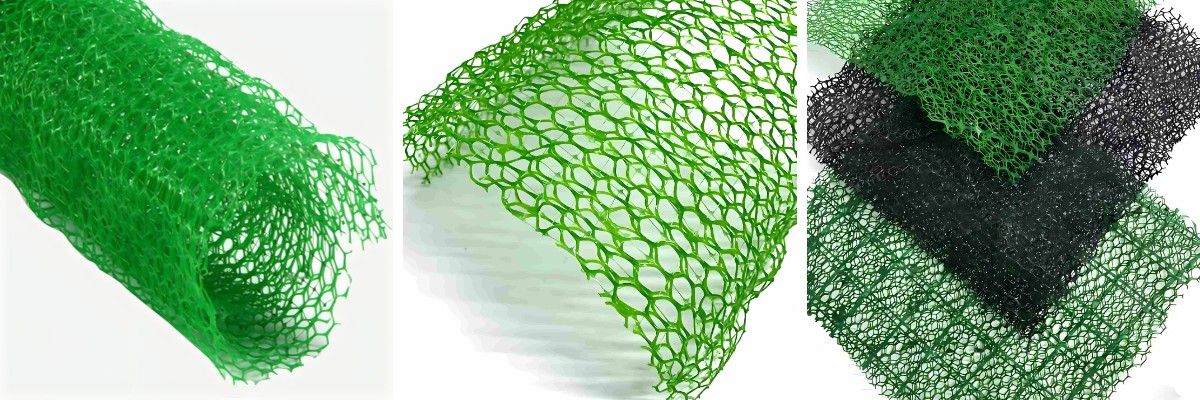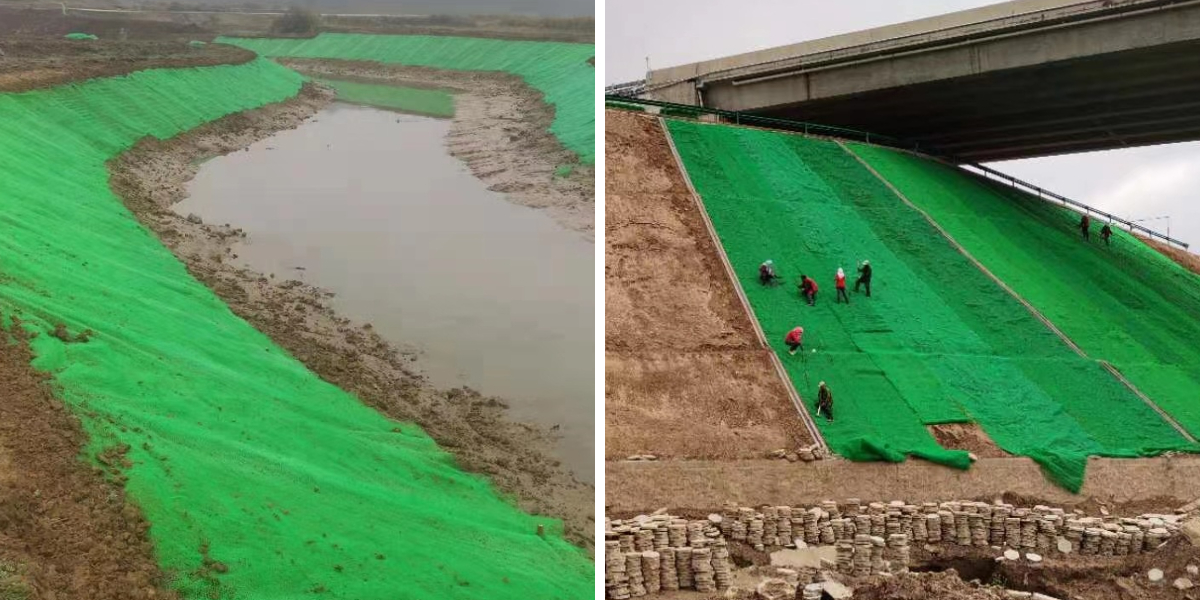Porosity & Drainage: Balancing Erosion Control with Water Infiltration
Erosion manage and water infiltration are two aspects of the equal coin in slope management. Too a good deal focal point on stopping erosion can block water from seeping into the soil, main to runoff, flooding, and unhealthy vegetation. Conversely, prioritizing infiltration besides erosion safety dangers soil loss and slope instability. The answer lies in choosing substances that stability porosity (the capacity to let water bypass through) and structural integrity—with erosion manipulate geomat and 3D Vegetation Net Specifications taking part in pivotal roles. This information explores how to gain this balance, particularly for difficult functions like steep slope erosion control. We’ll damage down the science of porosity and drainage, give an explanation for how key substances work, and furnish insights to assist you diagram structures that shield slopes whilst nurturing healthful soil and vegetation.
The Science of Porosity & Drainage in Erosion Control
Porosity refers to the wide variety and dimension of pores (openings) in a material, whilst drainage is the charge at which water flows thru these pores. For erosion manipulate materials, these two residences need to be finely tuned:
Too Little Porosity: Water swimming pools on the slope surface, growing runoff speed and eroding topsoil. Stagnant water additionally suffocates plant roots, hindering vegetation growth—a quintessential long-term erosion manipulate measure.Too Much Porosity: Large pores let soil particles get away with water, defeating the reason of erosion control. On steep slopes, immoderate drainage can lead to speedy soil drying, making it challenging for flowers to establish.The perfect stability relies upon on slope angle, soil type, and climate. For example, sandy soils (which drain quickly) want substances with average porosity to preserve some moisture, whilst clay soils (which preserve water) require greater porosity to forestall pooling. This is the place 3D Vegetation Net Specifications and erosion manipulate geomat designs are engineered to adapt to these variables.
How 3D Vegetation Net Specifications Influence Porosity & Drainage
3D Vegetation Net Specifications—including pore size, thickness, and material—are tailor-made to stability erosion manage and infiltration. These nets are three-d mesh constructions that lure soil, aid vegetation, and adjust water flow.
Pore Size: The Goldilocks Factor
Pore measurement in 3D Vegetation Net Specifications is the most necessary aspect for balancing porosity and drainage. Nets with small pores (10–20mm) lure best soil particles effectively, making them perfect for clay or silt soils susceptible to particle loss. However, overly small pores can avert water flow, main to pooling on mild slopes. Medium pores (20–40mm) strike a balance—they let water drain whilst holding most soil particles, appropriate for loamy soils and reasonable slopes. For steep slope erosion control, large pores (40–60mm) may also be used in aggregate with a geotextile underlay; the internet traps coarse soil, whilst the underlay filters fines, stopping each erosion and runoff buildup.
Thickness and Material: Supporting Drainage Structure
The thickness of a 3D vegetation internet (typically 2–5mm) creates vertical house for water to percolate, decreasing floor runoff. Thicker nets are really useful for steep slope erosion manage as they sluggish water velocity, giving it extra time to infiltrate. Material preference additionally matters: polypropylene (PP) nets are light-weight and flexible, adapting to slope contours whilst keeping pore integrity. PET nets, with greater tensile strength, are favored for high-stress steep slopes, as they face up to stretching that should widen pores and motive soil loss.
Erosion Control Geomat: Enhancing Porosity for Steep Slopes
Erosion manage geomat is a specialised 3D shape designed to make bigger the porosity-drainage balance, in particular for steep slope erosion control. Unlike flat geotextiles, geomats have a raised, honeycomb-like or mat-like shape that creates more than one layers of drainage paths.
Dual-Layer Drainage Design
Most erosion manage geomat merchandise function a dual-layer design: a pinnacle layer with large pores to deal with preliminary water waft and lure coarse debris, and a backside layer with smaller pores to filter first-class soil particles. This layout ensures that water drains rapidly except carrying soil away—critical on steep slopes the place water features speed rapidly. The geomat’s shape additionally creates air pockets, advertising root increase and soil aeration, which similarly stabilizes the slope over time.
UV and Wear Resistance for Long-Term Performance
For out of doors steep slope erosion control, erosion manage geomat is engineered with UV stabilizers and long lasting substances (like PP or PET). This prevents degradation from sunlight, rain, and temperature fluctuations, making sure the geomat keeps its porosity and drainage abilities for years. Unlike natural substances (like straw mats) that smash down quickly, artificial geomats furnish long-term assist till vegetation is thoroughly mounted to take over erosion control.
Designing a Balanced System: Tips for Slope Projects
To stability porosity, drainage, and erosion control, comply with these graph principles:
1. Match Materials to Slope and Soil
For mild slopes (≤30 degrees) with loamy soil, use medium-pore 3D Vegetation Net Specifications (20–40mm) alone. For steep slope erosion manage (>30 degrees) or clay/sandy soils, mix a large-pore 3D internet with a erosion manage geomat or geotextile underlay to filter fines and sluggish water flow.
2. Incorporate Vegetation for Natural Balance
Choose erosion-resistant plant life (like grasses or shrubs) that thrive in your climate. The 3D Vegetation Net Specifications or erosion manage geomat will help seed germination through trapping soil and moisture, whilst plant roots will similarly stabilize the slope and adjust infiltration as they grow.
3. Test Drainage Before Full Installation
Conduct a small-scale test: installation a part of your chosen material, simulate rainfall, and screen runoff and infiltration. Adjust 3D Vegetation Net Specifications (e.g., pore size) or add layers if pooling or soil loss occurs.
Conclusion: The Art of Balancing Porosity and Protection
Balancing porosity and drainage with erosion manipulate is no longer about selecting the “most porous” or “strongest” material—it’s about deciding on options tailor-made to your slope’s special needs. 3D Vegetation Net Specifications and erosion manipulate geomat are engineered to strike this balance, with pore size, thickness, and fabric working collectively to defend towards erosion whilst letting water infiltrate and nurture soil and vegetation.
For steep slope erosion control, this stability is even greater critical, as the hazard of runoff and soil loss is higher. By appreciation the science of porosity and drainage, and matching substances to your project’s conditions, you can create a slope machine that is each resilient and ecologically healthy—protecting infrastructure and the surroundings for years to come.
Contact Us
Company Name: Shandong Chuangwei New Materials Co., LTD
Contact Person :Jaden Sylvan
Contact Number :+86 19305485668
WhatsApp:+86 19305485668
Enterprise Email: cggeosynthetics@gmail.com
Enterprise Address: Entrepreneurship Park, Dayue District, Tai 'an City,
Shandong Province










